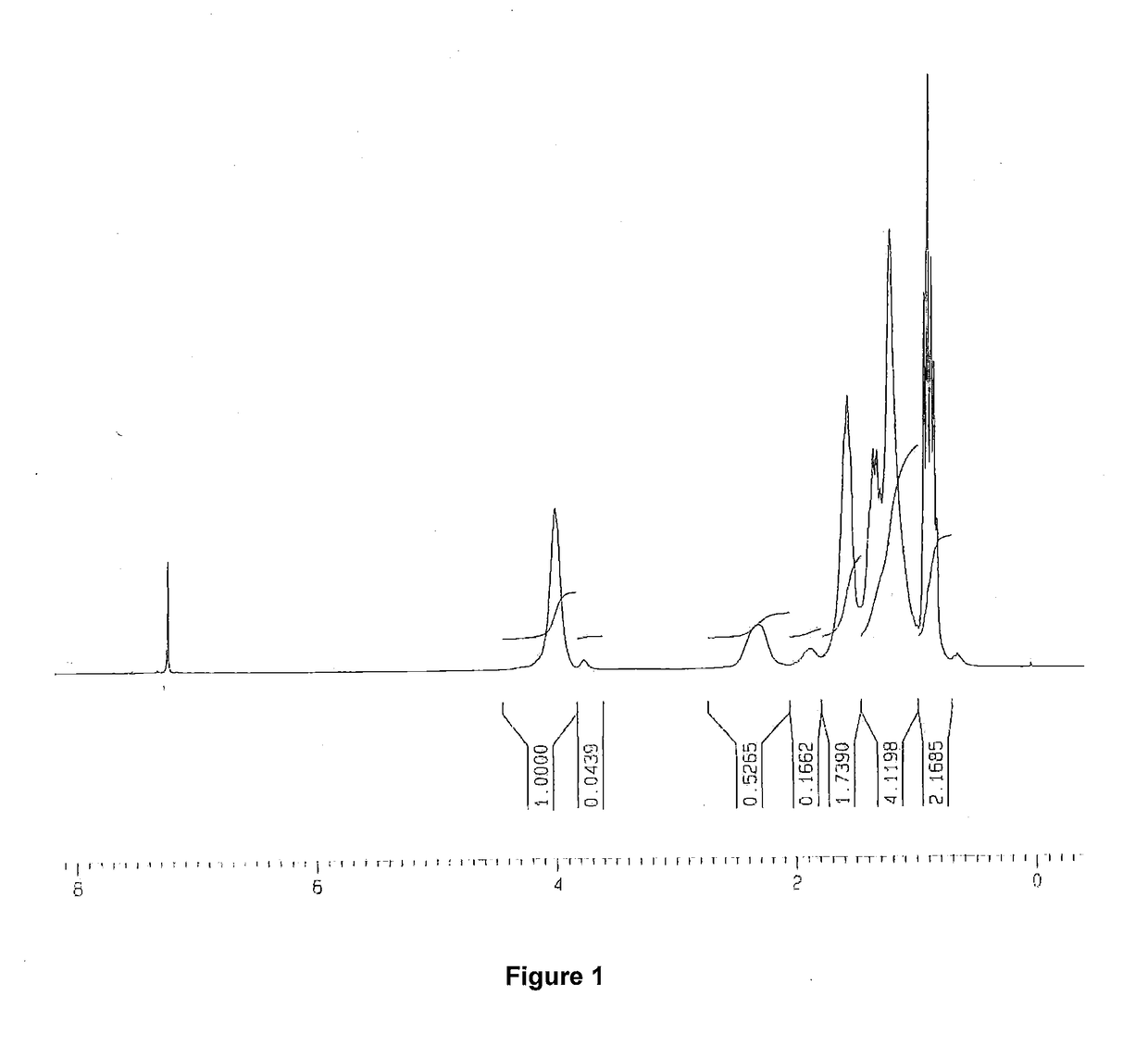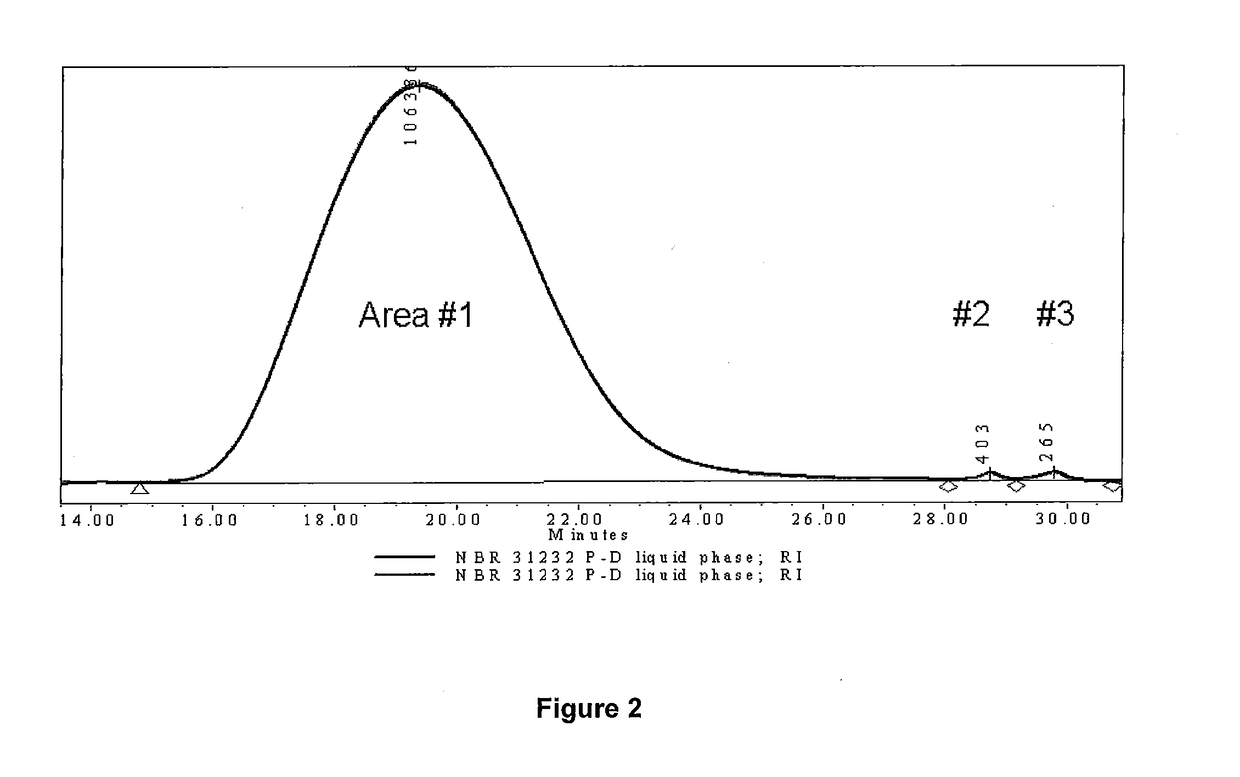Olefin-acrylate copolymers with pendant hydroxyl functionality and use thereof
a technology of olefinacrylate and functionalities, applied in the field of copolymers, can solve the problems of inability to obtain copolymers with thermally crosslinked functionalities, such as hydroxyl groups, and is generally considered unfavorable, and achieves the effects of high olefin content, good optical clarity and moisture barrier properties
- Summary
- Abstract
- Description
- Claims
- Application Information
AI Technical Summary
Benefits of technology
Problems solved by technology
Method used
Image
Examples
example 1
ization of n-butyl acrylate, 2-hydroxyethyl acrylate and 1-octene
[0080]In a two liter, 4-necked round bottom flask fitted with a mechanical stirrer, a thermometer, a condenser and nitrogen inlet, 1-octene (450 g, 4 mol), n-butyl acrylate (BA) (102.78 g, 0.8 mol), benzoyl peroxide (2.43 g, 10 mmol), and 2-hydroxyethyl acrylate (HEA) (4.65 g, 40 mmol) in toluene (275 mL) were added. The contents in the flask were stirred under nitrogen at room temperature. In a second round bottom flask with a nitrogen inlet, n-butyl acrylate (25.68 g, 0.2 mol) and toluene (27 mL) were added. Nitrogen was purged through the second flask, and the mixture was cooled using an ice-water bath. A 25 wt % solution of EtAlCl2 (ethylaluminum dichloride, Lewis acid) in toluene (101.79 g, 0.2 mol) was added to the second flask using a syringe. The flask was swirled to ensure thorough mixing of the contents. After about 5 minutes, the second contents were transferred through a syringe to the first reaction flask....
example 2
ization of n-butyl acrylate, 2-hydroxyethyl methacrylate and 1-octene
[0092]In a one-liter 4 necked round bottom flask fitted with a mechanical stirrer, thermometer, condenser and nitrogen inlet, 1-octene (150 g, 1.34 mol), n-butyl acrylate (34.26 g, 0.27 mol), benzoyl peroxide (0.81 g, 3 mmol), and 2-hydroxyethyl methacrylate (HEMA) (0.87 g, 6 mmol) and toluene (91 mL) were added. The contents were stirred under nitrogen at room temperature. In a second round bottom flask with a nitrogen inlet, n-butyl acrylate (8.56 g, 66 mmol) and toluene (9 mL) were added. Nitrogen was purged through the second flask, and the mixture was cooled using an ice-water bath. A 25 wt % solution of EtAlCl2 in toluene (36.6 mL, 66 mmol) was added to the second flask with a syringe. The second flask was swirled to ensure thorough mixing of the contents. After about 5 minutes, the contents from the second flask were transferred through a syringe to the main reaction flask. The reaction mixture was stirred a...
PUM
| Property | Measurement | Unit |
|---|---|---|
| temperature | aaaaa | aaaaa |
| weight average molecular weight | aaaaa | aaaaa |
| mol % | aaaaa | aaaaa |
Abstract
Description
Claims
Application Information
 Login to View More
Login to View More - R&D
- Intellectual Property
- Life Sciences
- Materials
- Tech Scout
- Unparalleled Data Quality
- Higher Quality Content
- 60% Fewer Hallucinations
Browse by: Latest US Patents, China's latest patents, Technical Efficacy Thesaurus, Application Domain, Technology Topic, Popular Technical Reports.
© 2025 PatSnap. All rights reserved.Legal|Privacy policy|Modern Slavery Act Transparency Statement|Sitemap|About US| Contact US: help@patsnap.com



